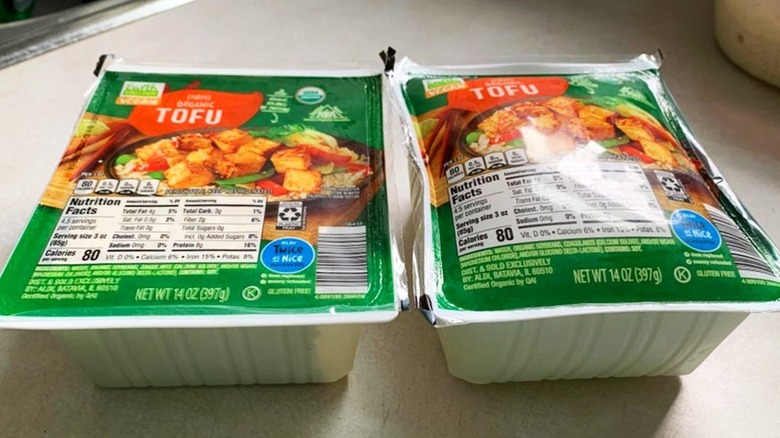Can You Really Eat Food That's In Swollen Packaging?
While grocery lists vary depending on the individual, every consumer wants food that is safe to eat. Dates listed on packaging are a semi-reliable way to confirm if something is past its prime, but expiration dates on food don't always mean what you think. People have learned to trust their senses when determining if things are safe to consume, and one thing many folks have been trained to avoid is groceries enclosed in swollen containers. Yet, puffy packages aren't necessarily an indication of rotten food.
Some products utilize modified atmosphere packaging (MAP). This method of storing food for distribution introduces gases into the container, which is meant to help preserve quality. However, one side effect of MAP is that it can cause the package to swell.
Salad mixes, meats, cheeses, and other foods that utilize this packaging method may appear bloated while in perfect condition. Of course, if you pick up food in a bulging container that hasn't used MAP, that can be a signal that bacteria have set up shop, potentially making them unsafe. That makes it more challenging to use a swollen storage vessel as an indicator of a subpar product, but there are ways to tell the difference between food packaged with MAP and groceries that are truly spoiling.
How to know if food is spoiled or packaged with MAP
The best way to determine if groceries in a bloated package are no good is to compare like merchandise. If they all look a bit puffy, that makes it more probable the food was packaged using MAP. However, if only one or two in a sea of like products are swollen, that may be a sign those items should be avoided.
If the packaging in question is see-through, you can use your eyes for more clues about the quality of the food inside. Spoiling provisions will frequently display discoloration, so comparing what you see inside to similar containers nearby can be helpful in determining the condition. Any sliminess on the surface of the food is another red flag that implies you might want to look for an alternative product.
Whether a product was packaged with MAP or not, if it wasn't kept at the correct temperature along the distribution process, it could potentially be unsafe. If you take a chance on a puffy container of cheap meat from Aldi because the deal was too good to pass up, be mindful of the smell when you open it after bringing it home. An off smell from a product in swollen packaging isn't a surefire way to verify it is harboring bacteria, but if the scent is overwhelming, it is best to toss it or try and return it if possible.

